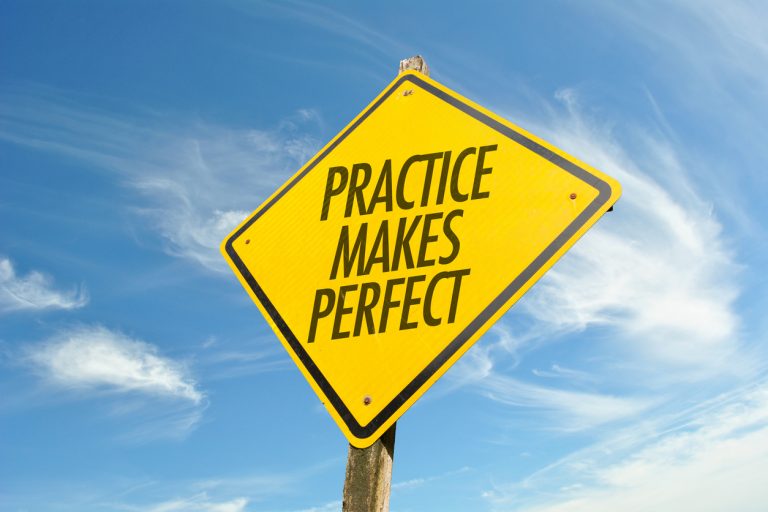Vibrato— What It REALLY Is, Why You Need It, and How to Get Some!
I’ve been teaching voice for more than thirty years, and I am still continually amazed at the amount of bad information and misconceptions singers have about vocal technique and voice production. Vibrato in singing is right there near the top of that list! Let me shed some light on Vibrato– What It REALLY Is, Why You Need It, and How To Get Some!
The Harvard Dictionary of Music defines vibrato as “a slight fluctuation of pitch used by performers to enrich or intensify the sound”. Picture hearing movement, or vibration, or “shimmer” as I like to call it, in a sung note. Rather than a completely straight tone with no fluctuation, like a pure flute or whistle tone, it sounds like the tone is “spinning” and also fluctuates in its intensity, as well as a tiny bit in pitch. A desirable vibrato is controlled, pleasant to hear, and feels very free and natural.
Unfortunately, many people associate vibrato only with bad opera singing
(think Florence Foster Jenkins, if you saw the recent movie with Meryl Streep). That is NOT vibrato. That is bad technique, and/or a damaged voice! Almost every style of music uses vibrato. Commercial styles like pop and jazz use it intermittently, whereas classical singers use it more consistently, infusing every syllable of their singing with that sparkling, shimmering sound. You may hear perfectly straight tones in early music
(I used to sing in a pro ensemble that specialized in that style), but by and large, vibrato permeates every genre of singing.
“But won’t using vibrato make me sound like an opera singer?” you ask. No, no, no! You won’t sound like an opera singer (a good one) unless you study opera, listen to opera, sing opera, and work toward that as your goal. One mistake singers often make is darkening their sound and making it more heavy when they add vibrato. They try to sound “older” or more mature than their years. Again, that is bad technique! Your
voice should have exactly the same bright, clear, natural YOU sound with or without the vibrato. I always say that people should not be able to tell how old you are just by listening to your voice. Keep it free of all those add-ons that don’t belong!
Also, vibrato is healthy, and natural! It’s like an internal massage for your vocal mechanism. Holding a straight tone takes more breath pressure, and can be more fatiguing, especially if you are not using proper technique at all times. And, when the tone vibrates completely, it is considered to have 100 cents— to be in perfect tune. The fundamental pitch and all its harmonics are present. This is more challenging to achieve when holding a completely straight tone at all times.
Singing with vibrato will grow your voice. Many singers who sing commercial styles with a lot of straight tone and a microphone tend to have much smaller voices. Most of their power comes from the sound system. If you take the mike away, you probably won’t hear them beyond the first few rows of the audience. Singers who are trained to sing with vibrato, such as opera singers and classical singers, as well as some Broadway singers, have much larger voices and can project far into the theater without the use of amplification. Now, lest you think I am looking down on commercial music, I’m not. I saw Tony Bennett once live (at 85 years of age, I might add) turn off the sound system at his concert and sing “Fly Me to the Moon” without a microphone. He filled the large hall with his voice, and the crowd went wild when he was done.
Basically, I look at the use of vibrato like a faucet that I can turn on and off, depending on the style of music I am singing, and the type of sounds I want to make. When you are trained correctly for singing, you should have good breath, a relaxed vocal mechanism and a consistent airflow that can resonate through the vocal tract and out your mouth without any tension. It is this magic combination that allows for the appearance of the vibrato. If you push your voice, you’ll strain and interfere with this natural process. If you don’t have enough breath pressure, there may not be good enough airflow for the vibrato to develop.
So— the $1,000,000 question I get asked all the time— “How do I develop vibrato?” Like, so many things in singing technique, I can’t point to a certain muscle and say “push this” or “pull that”. There are a lot of complex processes that happen in the body to produce singing, and many of them lie below the level of conscious control. Consistent vocal study with a good teacher over time should ultimately result in the voice “opening up” and blooming into that lovely, vibrating sound that is the end goal. But, there are still some more direct things we can do to hasten the process of developing vibrato.
We all have three major learning modes: visual (seeing), aural (hearing), and kinesthetic (physical sensation). Use each of them to move you toward your goal of attaining vibrato…
1. Use your power of visualization. If you picture a wavy line of air flowing forward from you to your audience, rather than a straight line, that will automatically keep you from pressing too hard and interfering with the natural vibration. “See” that undulating wave of air in your mind’s eye.
2. Listen to your voice as it is flowing out of you. Just by really
paying attention to what it sounds like, you can mentally “guide”
your tone production to create a different type of sound.
3. Feel the sense of vibration in your voice and body. Close your eyes
and deeply tune in to what it feels like when the voice is straight versus
resonating with vibrato.
Now, if that’s not enough, and for some people it isn’t, try something more
active— bouncing! Yes, that’s right. While you are singing your vocal exercises or songs, bounce quickly up and down from the knees until you hear the voice shaking, as if you are driving down a very bumpy road. This will not produce a real vibrato, but it will release vocal tension, pump more air through the system, and unleash a bigger, freer sound that has movement and is similar to the finished product. It sounds and looks a little crazy while you are doing it, but then when you go back and sing the same passage again normally, you should notice a much-improved sound that may even have the beginnings of some real “shimmer” in it! And, repetition is your friend. The more you do this, the faster you will develop your voice. It is also a great warm-up technique!
Imitate, imitate, imitate. You can use your sense of aesthetics, or artistic style, to help you develop your vibrato. Listen to great recordings of wonderful singers who have consistent vibrato, and then try to imitate their sound. You will be amazed at how fast you can get to a new technical level, just by trying to imitate a certain singer or style of singing. This doesn’t mean you want to sound exactly like someone else. You are simply using a good model of a specific technique you are trying to learn. Try to do it when no one else is around, so you’ll feel totally free to experiment. This will give you permission to step out of your comfort zone without fear of anyone judging you while you are learning. When I was a young opera student, I remember putting on recordings of Kathryn Grayson in the musical “Showboat” and trying to match her sound.
It was very freeing to step into a different pair of “shoes” and really stretch my voice into new habits.
So— now you know what vibrato is, and isn’t, and why it’s so important to any singer of any genre. You even have some actual techniques to work on getting it, or making it more consistent. Vibrato is a real game changer, and as you discover and refine this oh-so-important part of your singing technique, you’ll be thrilled with the results!
For related information, visit my earlier post:
Can You Really TEACH Someone to Sing, or Do They Have To Be “BORN WITH IT?”
For an interesting (if somewhat limited) discussion of the use of vibrato in music, visit:







